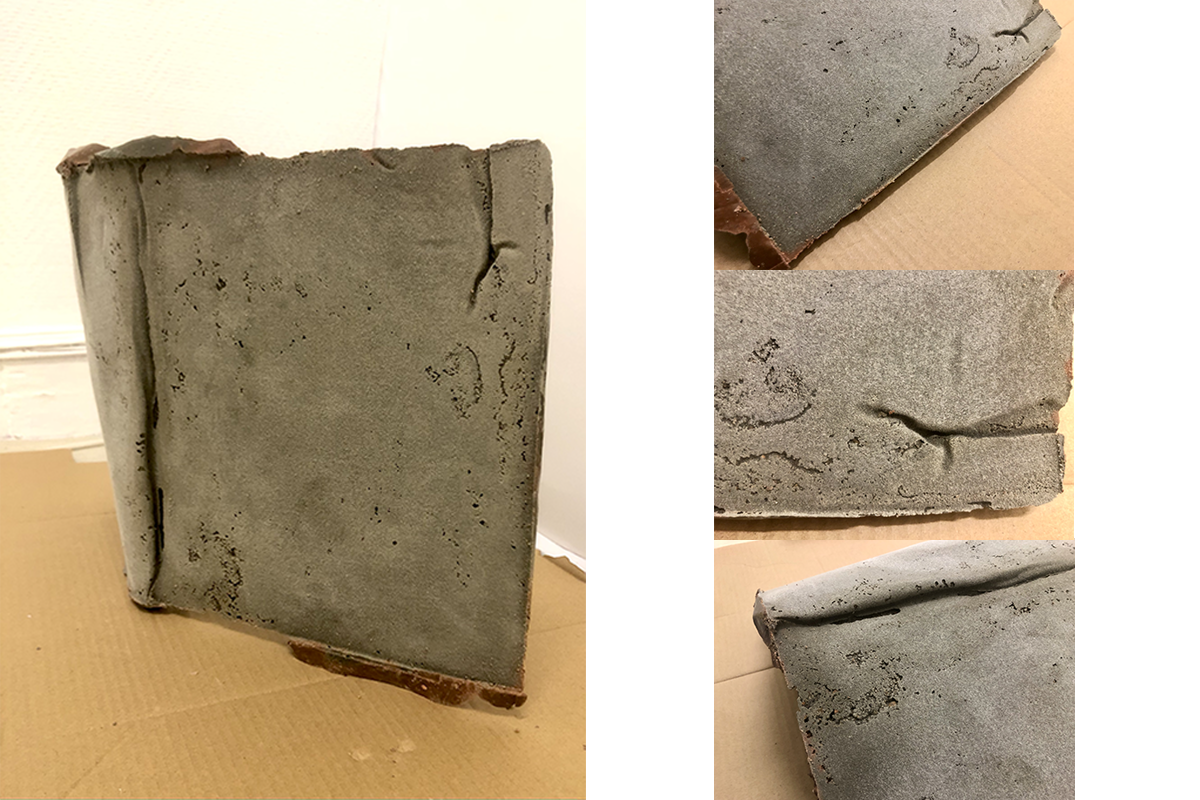W09. TEXTILE as SCAFFOLD¶
What a MASSIVE week! So much to explore and experiment, it rocks!

CHECK LIST
- -> Document the concept/ sketches/ references/ artistic & scientific publications
-
-> Produce 2 techniques of textile scaffold:
- crystallization
- wood-textiles composite
- resin & bioresin -textiles composite
- leather molding
-
-> Document the process x2
- -> Upload design & fabrication files
- -> Document achievements & unexpected outcomes
CRYSTALLIZATION¶
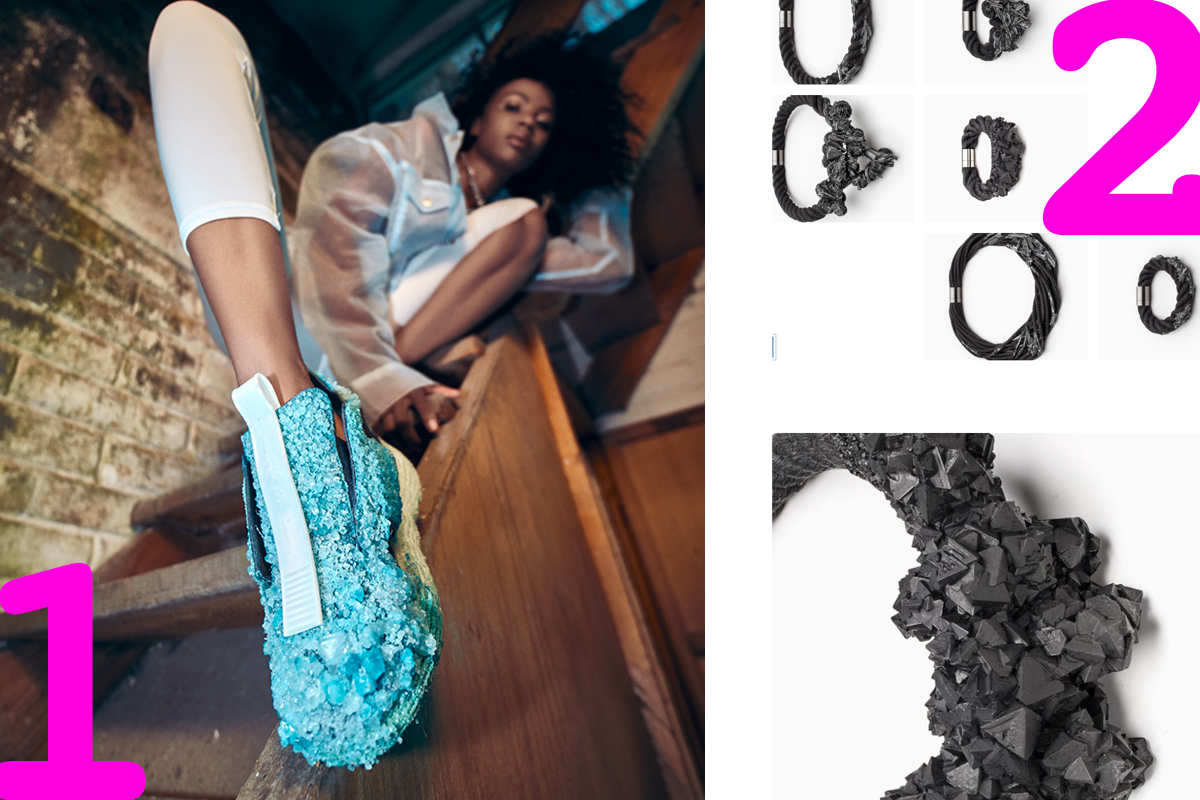
1 - FELIPE FIALLO
2 - ZORYA
ALUM CRYSTAL EXPERMENTS

| Ingredients | Quantities |
|---|---|
| Distillised Water | 1L |
| Alum | 250gr |
| How to | |
| Before starting clean tools and pots with ethanol | |
| 1. Warm up distillised water 80°C | |
| 2. Dissolve alum | |
| 3. Filter solution | |
| 4. Pour into a container | |
| 5. Hang in the middle of the container: fabric, hamp, wool... | |
| 6. Gently wait |
- For helping the crystalisation you can stick small crystals before putting samples.
COPPER SULFATE EXPERIMENT
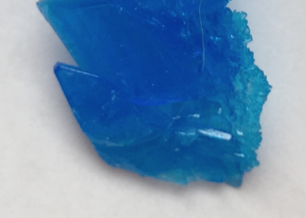
| Ingredients | Quantities |
|---|---|
| Distillised Water | 125cl |
| Copper sulfate | 450gr |
| How to | |
| Before starting clean tools and pots with ethanol | |
| 1. Warm up distillised water 80°C | |
| 2. Dissolve copper sulffat | |
| 3. Filter solution | |
| 4. Pour into a container | |
| 5. Hang in the middle of the container: fabric, hamp, wool... | |
| 6. Gently wait |
LEATHER LEFTOVERS COMPOSITES¶
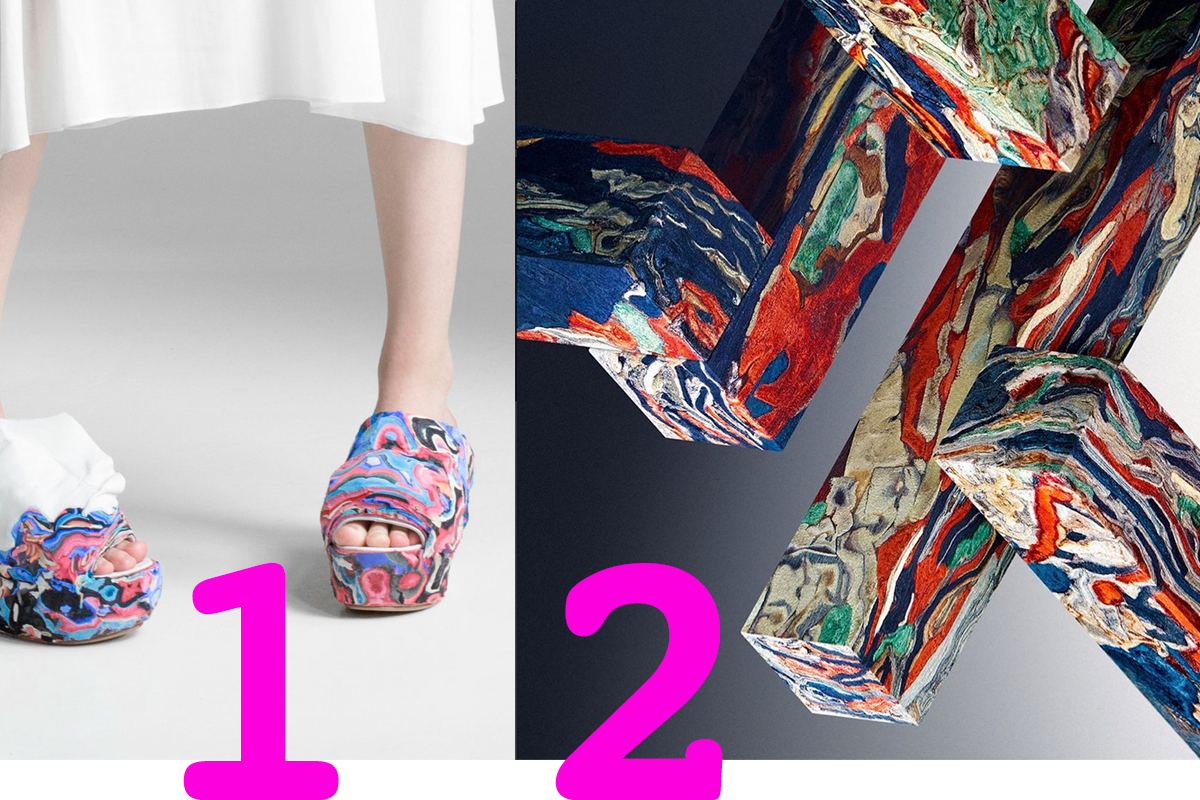
2 - Jorge Penades
MAKING
1st step: Leatherleftovers
|Needed|
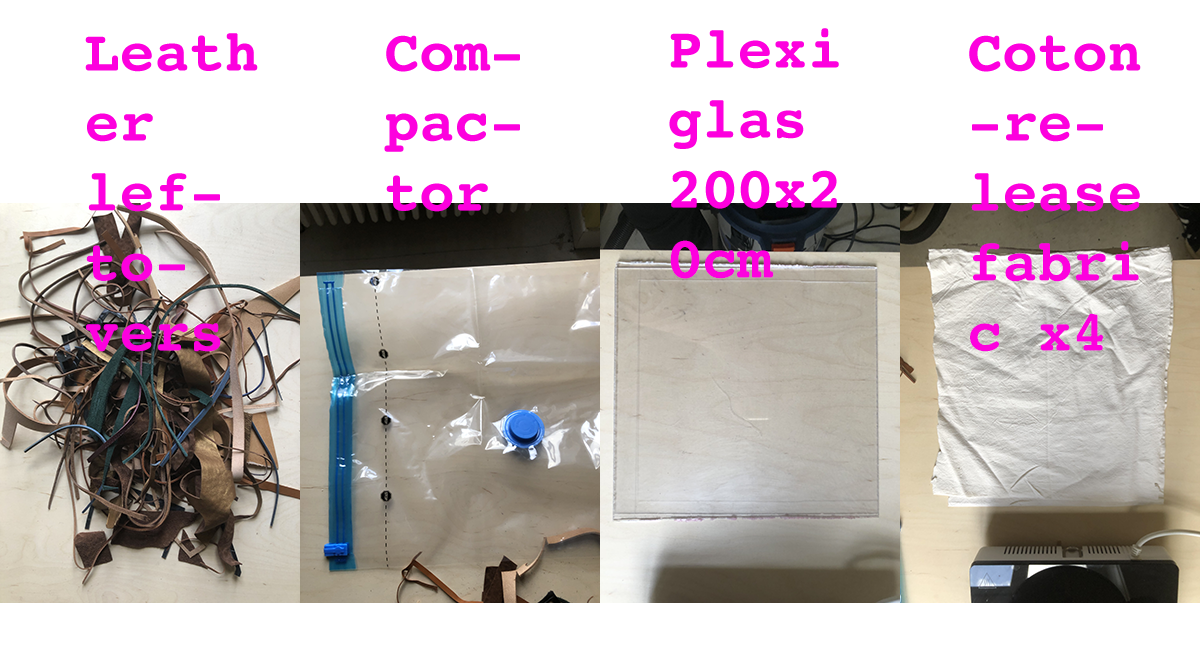
|How to|
- Select leather leftovers
- Warm up water 80°C
- Add leather
- Remove leather when you don't hear noise
- Take first piece of plexiglas
- Put piece of coton fabric
- Put wet leather
- Put piece of coton fabric
- Take second piece of plexiglas
- Slide it into compactor
- Strive
The leatherleftovers stick together
- For the drying part in order to be faster you can change the piece of coton
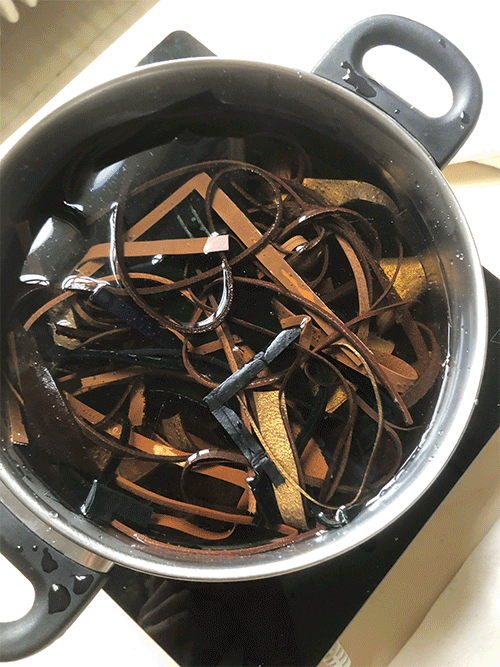
2nd step: Resin& compacted leather
|Needed|
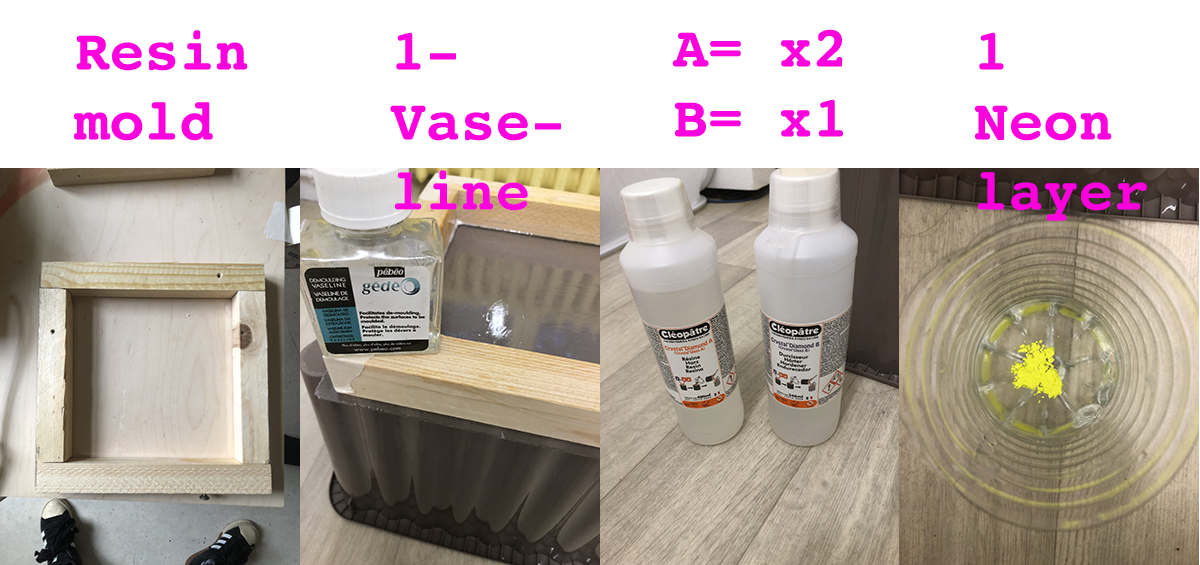
|How to|
- Make a mold
- Put vaseline
- Mix A&B resin following the guidelines on the bottle
- Add pigment or not, I choose Neon :)
- Pour the resin slowly for not making bubbles
- Add leatherleftovers from previous transformation
- Pour the rest of resin on top
- Lets dry needed 48hours
- Hard to remove from mold perhaps use sylicon
- You can cut it and polish it for niecer look
TEXTILE/CONCRETE¶
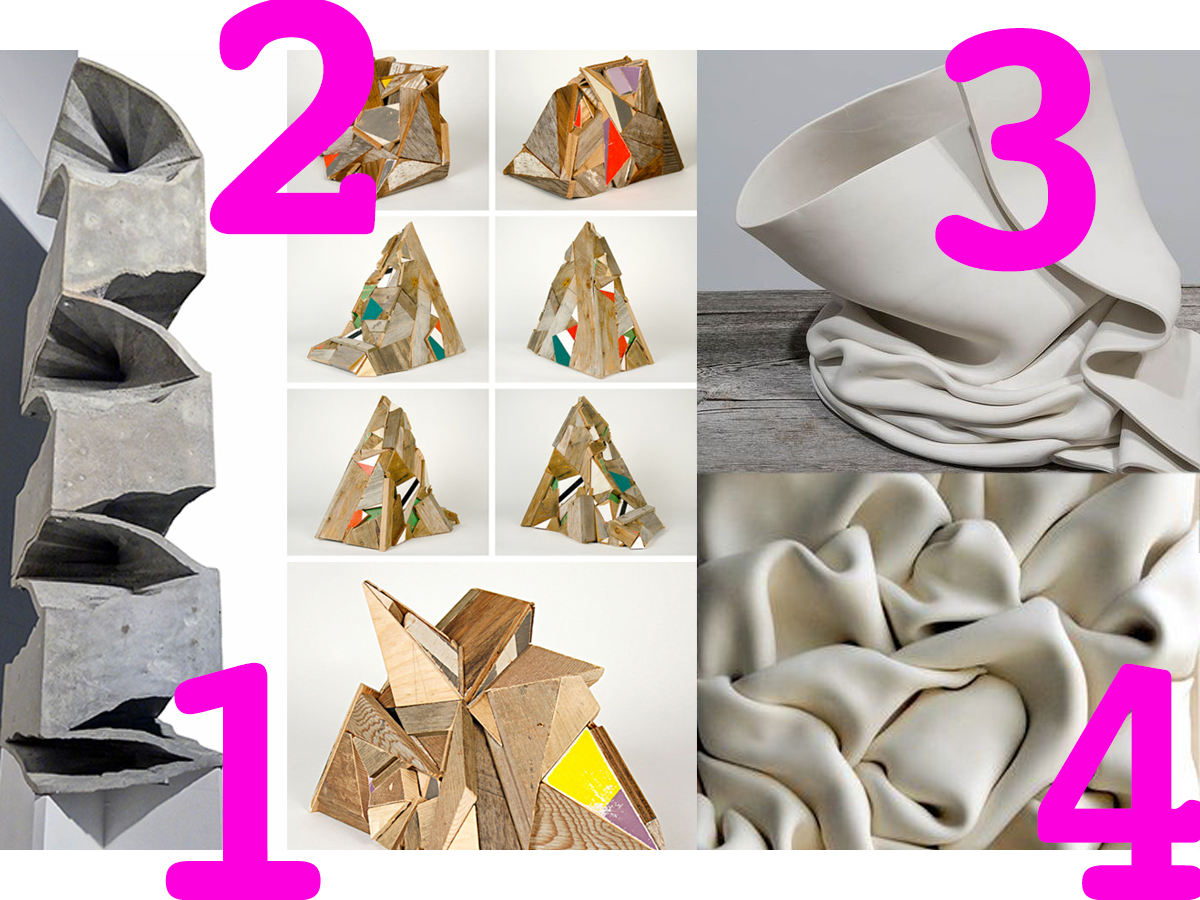
1 Double o Studio BACK Column_9: Entangling and Cracking (part 9 out of 9 from New Orders), 2015 "Column 9 expands on the procedure developed in the making of column 8 but in this casehorizontally. In addition to movement, a time factor is introduced. New slab topologies arise from incremental protocols on a moving line in space. Although the project is still in its infancy, early findings present unique slab topologies, whose forms would be difficult to preconceive through other means of digital fabrication. Being described by successions of straight lines, these intricate slabs retain an efficient and a direct link to timber formwork and full scale construction. The EPS mould-making method also resonates with the parallel made earlier on stereotomy, although this time by operating internally in the carving or slicing of a block."
2 Aaron Moran Weheart
MAKING
|Needed|
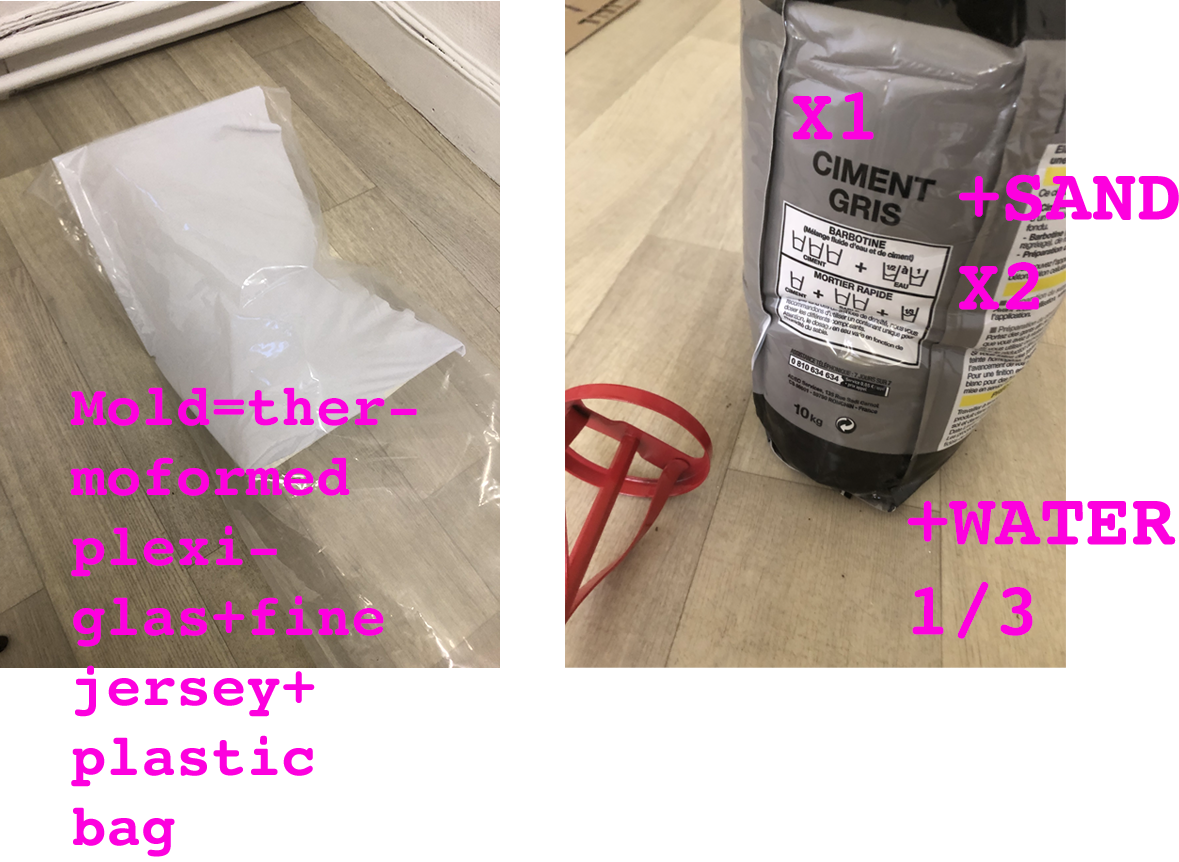
|How to|
- Take a plexiglas and heat it with drying air gun in order to get a balance shape
- Put it in a plastic bag
- Put a thin and elastic fabric: jersey on the plexiglas
- Put the concrete melange on top of the fabric
- Stick the plastic bag to the concrete
- Lets dry
